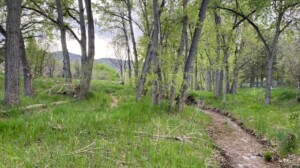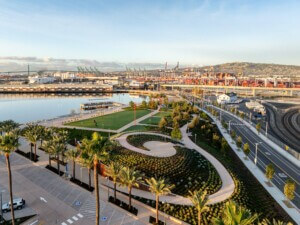Suggestions for “lifelike or realistic” representations of “historically significant Americans” that could potentially populate the Trump administration’s planned National Garden of American Heroes have now been submitted by officials in various states, territories, and counties. The informal nominations were sent in response to a call for ideas put forth earlier this summer by the Secretary of the Interior-chaired task force charged with overseeing the creation of the contentious statuary park that will—not surprisingly—forbid any abstract or modernist statues. As stipulated by executive order, the park is to be opened in time for the 250th anniversary of the proclamation of the Declaration of Independence in 2026.
When the patriotic sculpture park was first announced, the administration offered its own list of 31 statues: The seemingly arbitrary and not very inclusive assortment presented by the White House quickly garnered groans from historians. While several Black historical figures including Harriet Tubman and Booker T. Washington made the cut, the most contemporary of them, Jackie Robinson, died in 1972. Hispanic Americans, Native Americans, Asian Americans, and LGBTQ Americans were completely absent from the list and it was short on modern-day progressive political figures.
“It’s just so random. It’s like they threw a bunch of stuff on the wall and just went with whatever stuck,” Karen Cox, a history professor at the University of North Carolina at Charlotte, told the Washington Post in July. “Nothing about this suggests it’s thoughtful.”
The Department of the Interior’s idea-gathering process seeking recommendations for additional statues—or existing statues that could be loaned or donated—has also produced a wildly random jumble of names but it does boost the diversity factor. As pointed out by the Associated Press, the proposed statues are “more activist, less white, and far more indigenous” than the White House-generated list.
Only a small number of governors, Republicans included, responded to the Department of the Interior’s request for nominations. A bipartisan mix of local elected officials from a range of states did, however, submit plenty of ideas. Some Democratic governors did technically respond but only to say that they would not be participating. Many officials said they supported the effort but did not have ideas for potential statues or know of any “heroes” that could be loaned.
And even in Republican-led states, the suggestions for potential statues were more diverse and included more historic BIPOC figures and civil rights icons—Rosa Parks, Thurgood Marshall, Madam C.J. Walker, John R. Lewis, Henrietta Lacks, Geronimo, Wilma Pearl Mankiller, the Little Rock Nine, and Sacagawea among them— than the Trump administration list, per the AP.
Some officials circumvented the statue query altogether but did enthusiastically recommend available sites in their counties or states that could potentially serve as the future home of the very large National Garden of American Heroes. (Along with asking for recommendations for additional statues and inquiring about existing statues for loan or donation in his letter sent to 2,000 officials, the available site question was also posed by Interior Secretary David Bernhardt.)
Lehigh County, Pennsylvania, commissioner Amy Zanelli, meanwhile, advocated for statues of George Floyd, Breonna Taylor, Trayvon Martin, and other Black Americans whose senseless deaths have served as catalysts for the ongoing historic social justice movement. “We are making great advancements, and it would be prudent to remember them as historically significant Americans,” she wrote. Douglas County, Colorado, commissioner Lora Thomas nominated Kendrick Castillo, the 18-year- student who was killed when confronting a gunman—and averting a much larger tragedy—at his Denver-area high school in 2019.
A taste of just some of the other nominations: Bob Dylan and bluegrass legend William Smith Monroe (Thurston Country, Washington); supersonic pilot Chuck Yeager and labor leader Caesar Chavez (Kern County, California); trailblazing Black congresswoman Shirley Chisholm and 13th President Millard Fillmore (Erie County, New York); and John Wayne (Mohave County, Arizona). Among other figures, Custer County, Idaho, commissioner Steve Smith suggested Albert Einstein, a German-born refugee, and Donald Trump.
As noted by the AP in another article, one of the more enthusiastic responses–on the gubernatorial side, at least—to the task force came from Idaho Governor Brad Little, who offered up the Gem State in its entirety as a potential site for the sculpture park. Noting its “incredible mountain ranges, vast high mountain deserts, and lush forests,” Little said he would be “happy to engage the task force, and I am open to Idaho being the recipient of the national monument and memorial.” He also listed a total of 21 Idahoans who he thought should be included in the park including a potato baron, a supermarket magnate, an opera singer, an astronaut, multiple human rights activists, and, yes, even an architect.











